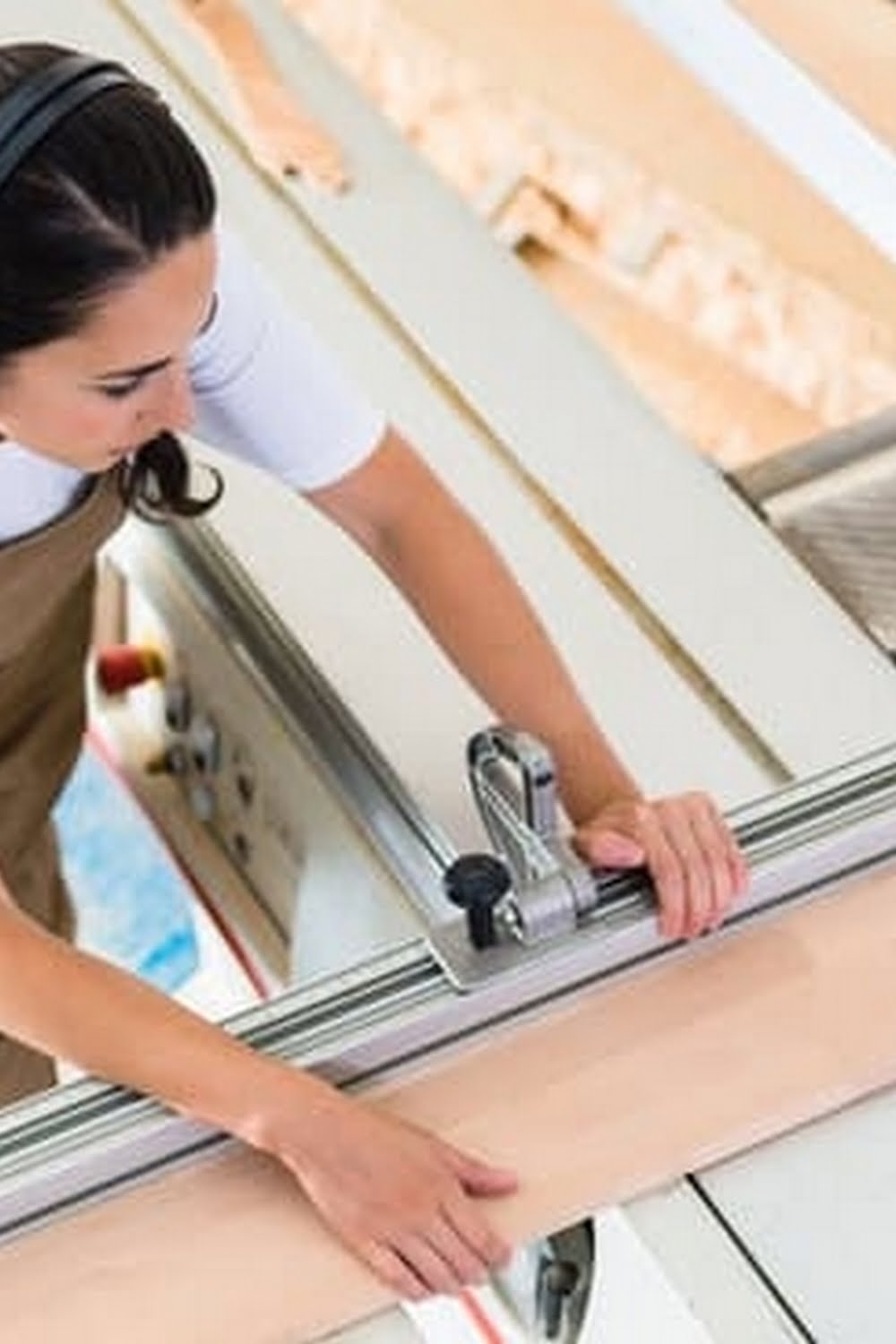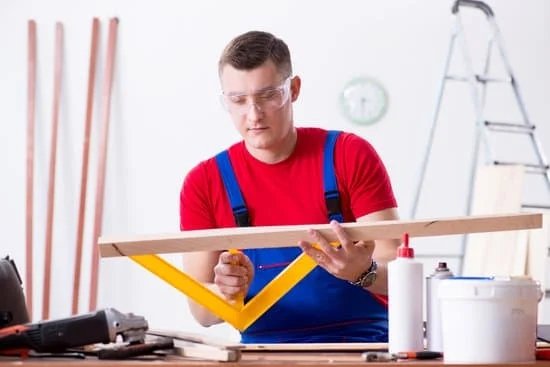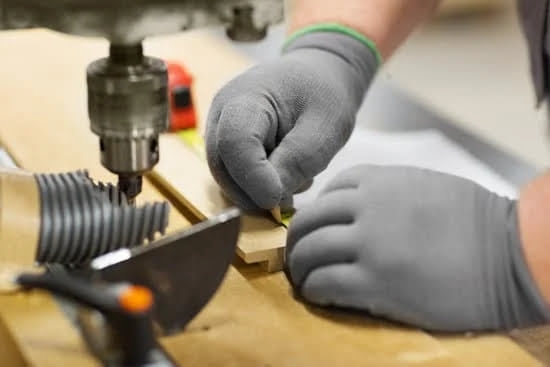Introduction
Woodworking fasteners are a range of hardware components used to securely attach two pieces of wood, metal, or plastic together. They provide a strong and durable connection that prevents objects from shifting or separating over time. Fasteners come in a variety of sizes, shapes, types, and materials and serve various functions including enhancing the strength and appearance of a project. Some of the most common materials for woodworking fasteners include steel, brass, copper, aluminum, plastic, nylon and composite material like carbon fiber.
The type of woodworking fastener you use can make a big difference in the strength, durability and aesthetic quality of your product. For example screws offer great strength but require pre-drilling whereas nails offer quick installation but lack long-term hold strength. There are also many specialized fasteners such as lag bolts for joining heavy pieces of lumber together or dowels that create a very solid joint without requiring drilling holes first. Other types such as T-nuts create threaded holes in materials like plywood and MDF which let you easily secure hinges and other components onto them. No matter what kind is chosen there are benefits to be had when using any type of woodworking fastener
In order to get the highest performance out of your woodworking projects it’s important to choose the correct type for each particular application; taking into account factors like required strength level or usage environment like dampness. Choosing the right type will not only ensure your project holds together in terms of overall structure but can also improve its longevity and aesthetic appeal with items like hidden screws used for flush connections on joinery pieces. Finally understanding what each has to offer can also help you save time by giving you peace of mind that the job is done right rather than having to redo it months down the line due to a failure with an inappropriate type chosen initially
What Are Woodworking Fasteners?
Woodworking fasteners are specially designed components used to join wooden or other materials together that are commonly seen in the construction, furniture making, and carpentry industries. They can be bought in a wide variety of sizes, shapes, and types from home improvement stores and industrial supply shops. They are specifically made for joining wood pieces together and can be adjusted to different objects. There are five main categories of woodworking fasteners: screws, nails, dowels and joiners, bolts, and hinges.
Screws are the most common types of fasteners used for woodworking projects. These come in a variety of sizes with point configurations ranging from flat to star-shaped countersinks preferred when hiding the head. Screws vary greatly in terms of strength as well as how they grip materials being joined together. Specialty screws such as self-tapping screws are often used in applications where conventional screws may not provide adequate holding power.
Nails come in many different sizes and shapes depending on its intended use. The most common type is a flathead nail while others like box nails or masonry nails may be necessary for specific applications. Nails offer an inexpensive solution to minimal applications but lack the strength that stronger screw based solutions provide.
Dowel rods meet parallel surfaces together securely much like mechanical bolts but without requiring cutting tools for installation due to their cylindrical shape which inserts directly into predrilled holes on either side of what is being connected together. Dowels also offer woodworkers greater design flexibility as they can come in longer lengths than bolts or nails allowing for more complex joints to be created such as mortise & tenon joinery styles for example.
Bolts have four main parts: a screw head, threads on shaft, nut threaded portion at bottom; these allow it to create tight connections between two pieces by providing pressure on both sides through tightening the nut down onto threads cut into top material whereas there is no need with nails which rely on friction alone to hold objects together tightly while keeping them flush against each other after installed correctly.. Bolts will usually require specialized tools such as wrenches when being installed but offer a stronger connection than mechanical screws and dowels due to their threaded design being able rotate within drilled hole forming accurate alignment with tighter available tension levels respectively compared when tightened all way down properly ensuring secure joint no matter what jointing method was employed prior (eg glue).
Hinges are also very popular among woodworkers and allow furniture pieces or objects to open using a pivot point rather than some sort of sliding motion which would require sometimes complex grooves routing where hinge would fit alongside complimentary matching divot set flush against surface object rests upon respectively – also known sometimes either “butt” hinges being traditional seemingly unmarked single-piece item connected along axis centerline opposed corner style often featuring stylistic detail either side depending maker’s preference preferences when comes aesthetic/design element alike whether stainless steel brass bronze etcetera although not necessarily category terms here necessarily per se describes thought behind aforementioned related items concepts primarily anyway still illustrate general idea being inferred here regardless though descried essentials picture perfectly describe things further so feel free explore summaries explained simply enough please do enjoy your experience endeavour then!
Different Types of Woodworking Fasteners
Woodworking fasteners are an essential part of any woodworking project. With so many types to choose from, it can be hard to know which is best for your particular project. Understanding the different types available and their uses can help you make the right choice for success.
The most common type of fastener used in woodworking projects is a nail. Nails are typically made from steel, although stainless steel and copper may also be options. Most nails come with a point at one end, so they can easily penetrate into wood surfaces or hold items secure when placed into pre-drilled holes or slots. Nails are usually avaiable in various sizes and lengths so you can choose the best option for your task.
Screws are another popular type of woodworking fastener. These usually have a spiral shape with a flat head that can be secured with either a screwdriver or by hand during installation. Screws come in different sizes as well, allowing you to choose the right length for your project. Self-tapping screws are another great option, as they don’t require pre-drilling the hole when installing into hardwood surfaces – like plywood or hardboard – making them great time savers!
Bolts and washers also form part of many building projects where extra strength is needed to secure lasting items together, such as furniture joints. Bolts come with a variety of head types suitable for different tools, while washers are used on top of both bolts and screws to spread out pressure over a greater area improving structural stability and aesthetics over time.
Finally, pins or brads can be added into pieces of wood by hand or using special pin guns like bostitch which allow small pins to be inserted quickly and accurately without damaging nearby timber pieces – ideal for joinery work!
Screws
Screws are a type of fastener commonly used in woodworking projects. They typically consist of a threaded metal rod with a head at one end. Once the screw is inserted into a pre-drilled hole, turning it with a screwdriver causes it to make its own thread as it turns, firmly securing two objects together. Different types of screws have various advantages depending upon the project. Wood screws are specifically designed for attaching two pieces of wood together and feature large, square heads that easily countersink into the surface without damaging its appearance. Drywall screws are coated to prevent corrosion and feature small heads designed to sink flush into walls or other thin surfaces. Machine screws come in a variety of shapes and sizes, but usually have an unthreaded length above the threading which helps keep them secure when installed with nuts, washers or other fasteners. Lag screws are designed to be installed into a tapped pilot hole and feature additional gripping threads below the head portion to provide extra locks when fastening materials. Finally, specialty screws like particle board or masonry screws may be necessary for very specific tasks.
Nails
Nails are perhaps the oldest and most staple type of woodworking fastener. They offer strong bonds and can be driven quickly and easily into a variety of woods. Nails are usually made either from carbon steel, alloys such as stainless steel, iron or brass. Depending on the material making up the nail, they vary in terms of strength, durability and rust-resistance. Nails come in a variety of sizes — the size of the nail is determined by its length and gauge (the diameter). The most common type of nails used in woodworking are common wire nails, but many other types exist such as casing nails, finishing nails, box nails, masonry nails and siding nails which are specialized for different timber joint applications. Finally, there are also special kinds of screws known as screw shafts or lag screws that offer even more strength than common woodworking nails.
Glue
Glue is one of the most advanced and versatile fasteners for woodworking projects. It offers unparalleled strength and flexibility, allowing you to join two pieces of material together with a secure bond. Glue can be used in any number of woodworking situations, whether it’s joining them permanently in furniture or temporarily while drilling or sawing. Different types of glue are available depending upon your needs, such as low viscosity, medium viscosity and high viscosity glue. Each type is designed to fit the specific requirements of your project and deliver superior strength between materials. Super glues are especially effective at providing a strong bond when bonding dissimilar materials like plastic or metal to wood. While dried glue can be difficult to undo, specialized removers can help unravel even the toughest adhesions without damaging your work. Using a clamping system when applying is also recommended for consistent bonds over time
Dowels
Dowels are cylindrical rods made from wood, metal, or plastic that are used as fasteners. They are most commonly used in carpentry and woodworking to join two pieces of wood together securely. Dowels can be used in combination with other fasteners such as nails and screws to enhance the joining strength of a piece of furniture. Wooden dowels are preferably used when creating furniture due to their ability to absorb shock or vibrations and reduce rattling, making them especially useful for inexpensive furniture pieces. Metal dowels on the other hand may be appropriate in some applications, as they offer higher strength than wooden dowels but also transfer heat better between two connected surfaces. Plastic dowels make an attractive option in many cases since they come in different colors and shapes, making them suitable for decorative applications.
Bolts
Bolts are a popular type of fastener used for woodworking projects. They are typically made out of steel and come with a threaded shaft and round head. Bolts are typically used in combinations with nuts, washers, and other hardware to secure pieces of wood together quickly and securely. They can also be used to hold things such as furniture legs or appliances in place. Bolts come in various lengths to accommodate different wood thicknesses, and they can also have various types of threads”such as lag threads or machine threads”depending on the specific application. It’s important to choose the right type of bolt for your project, as using the wrong type of fastener could result in a loose joint or lack of security.
Strap and Pin
Strap and pin are one of the most commonly used woodworking fasteners. This type of fastener is also known as butterfly hinge or hasp and consists of two halves”a male half (the pin) and a female half (the strap). The male half, with a sharpened point at each end, is placed through pre-drilled holes in two pieces of wood. Once in place, the pointed ends are bent outward in opposite directions to hold the wood pieces together. The female half then fits over the top of the pinned area and covers it to secure it in place. Strap and pin fasteners can be used to make furniture, boxes, chests, or even trunks. It provides an extra layer of safety by ensuring that whatever you’re building stays together securely.
Benefits and Limitations of Different Fastener Types
Woodworking fasteners are a common type of hardware used in home projects and carpentry. There are a wide variety of different fasteners available, each offering its own benefits and potential limitations when it comes to woodworking.
In general, nails are likely the most versatile fastener type for woodwork due to their relative affordability and ease-of-use. Nails typically provide a strong connection that holds firmly in place until pried apart, making them ideal for many projects. The main limitation is that nails can cause splintering as they are driven in or pulled out, potentially damaging the surface of the wood if not properly handled.
Screws offer increased versatility compared to nails since they come in various sizes and shapes, such as Phillips and flat head varieties, allowing for attachment in a variety of ways. Given their design, screws also hold more securely than nails because a portion of the material is threaded into the wood rather than resting on top like with nails. The main limitation with screws comes from their tendency to strip when too much torque is applied while installing, requiring replacement or additional support via plugging or other reinforcements.
Accompanying nails and screws are several alternative fastening methods such as doweling, bolts & nuts and using adhesives or glues. Dowels create sturdy connections between two pieces of wood but require tooling for proper installation since plain wooden dowels don’t have threads like screws do; this method also takes significantly longer to attach due to having to drill both pieces of material at once and align them accordingly prior to insertion. Bolts & nuts create another secure connection style for solid constructions but can be time consuming when more than one piece is being attached; furthermore, extra length will need to be secured inside the construction through plugging so it isn’t visible from the outside after installation has been completed. Adhesives & glues provide another useful option for bonding certain types of materials together depending on what kind is used; however some adhesives may not withstand extreme temperatures which could lead to loosening during hot days or further expansion during colder periods impacting overall stability if not regularly monitored over time.
How to Choose The Best Type of Woodworking Fastener
When selecting the right type of fastener for any woodworking project, it is important to understand the purpose of each type. Different projects require different types of fasteners, depending on their intended application. A few of the most commonly used woodworking fastener types include nails, screws, staples, hinges, glue and bolts.
Nails are often used in making furniture and other timeless pieces where strength and durability are at a premium. They come in various gauges, materials and lengths to suit a wide range of construction needs.
Screws provide the additional advantage of being adjustable if removed using a screwdriver. Screws are usually employed for joining two objects together securely and firmly or for fixing things such as light fixtures or cabinet doors securely on the wall.
Staples allow for easy assembly and disassembly compared to nails or screws but don’t offer much longevity when it comes to stronger structural frames. Staples can be made from a wide range of materials and sizes so it is important to ensure that you choose the right size staple for your application with ample clearance between joints and staples themselves.
Hinges provide heavily reinforced support points between two objects that need to be held together firmly while allowing some degree of movement in either direction along an axle depending on how they are constructed. Hinges come in various strengths including those meant to hold shelves in place as well as entire cabinets onto a wall securely yet hide away when not needed due to their discrete design also makes them aesthetically pleasing when open up around 80-105 degrees depending on what kind is chosen.
Glue provides great adhesive power between two objects by filling gaps that may exist between them creating an even stronger bond than nails or screws when used properly because it does not necessarily require precision drilling holes etc… Glues come in both liquid form (epoxies) which provide exceptional bonds but take time before reaching full strength or dried gel forms that cure quickly but may not always provide long-term strong adhesives that can handle weight loads over time easily anymore like liquid epoxies do so its important keep this mind before deciding which kind use when taking on bigger projects!
Bolts are available in numerous shapes, sizes and designs, with each offering its own unique functionality; corners like truss head lag bolts work great for high stress supports such as decking frames or similar applications requiring higher amounts of torque during installation due multiple wings prevents loosening or rotation once secured whereas round headed carriage bolts look better tightening framing pieces without being visible from up front after installation since they sit flush against surface unlike Lag Bolts unlike could potentially ruin aesthetics if seen beyond first layers structure since these should remain hidden ensuring maximum aesthetics appeal desired overall result!
Common Issues With Woodworking Fasteners and How to Avoid Them
Woodworking fasteners come in many different shapes and sizes, from screws to nails and brads. They can be used for tasks such as joining two pieces of wood together, or attaching objects to a surface. While having a range of fasteners for your projects can be useful, improper application of the wrong type of fastener can cause significant problems.
Whenever you use woodworking fasteners, make sure that you choose an appropriate size and type for the job. Over-tightening screws is a common issue, which can strip the head or split the wood if it is too small or weak. In contrast, nails and brads that are not driven in far enough will not have enough secure grip on the materials; this issue can especially occur with harder woods such as oak. To avoid these issues, check that the fastener size is appropriate for the job and use power tools if possible to drive them in. Using force gauges to monitor how much pressure you’re applying when using manual tools is also advised! Additionally, lubricating screw threads before driving them in can help to reduce friction, which then reduces the chances of splitting or stripping out material around the hole.
Summary and Conclusion
Woodworking fasteners are essential for many woodworking projects and can greatly affect the quality of a final product. There are a variety of types of fasteners available, including nails, screws, glues, staples, and bolts. Nails and screws are the most common type of fastener used in carpentry and come in various sizes and threading patterns. Glue is an important component of some projects as it provides extra strength to the joinery process. Staples are often used for attaching items like fabrics, veneers and edge bandings as well without damaging them. Different types of bolts ” carriage, lag and hex ” have varying purposes dependent on the project being undertaken.
In conclusion, woodworking fasteners have multiple uses when constructing woodwork pieces from small furniture items such as bookshelves to larger things like decks or gazebos. Their different sizes, shapes and threading patterns provide greater flexibility for almost any situation that may arise in your project. In addition to their many uses, choosing the right type of fastener is just as important because of its effects on the durability, strength and overall quality of your finished product. For proper installation it is always wise to consult an experienced tradesperson who can recommend the best choice for your individual requirements or take advice from certified products manufactures regarding proper usage.

Hi everyone! I’m a woodworker and blogger, and this is my woodworking blog. In my blog, I share tips and tricks for woodworkers of all skill levels, as well as project ideas that you can try yourself.





